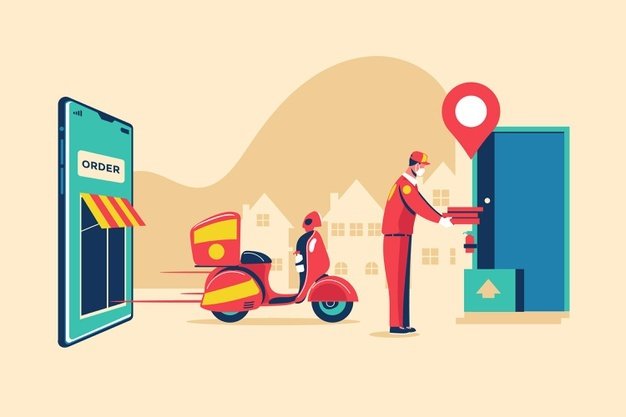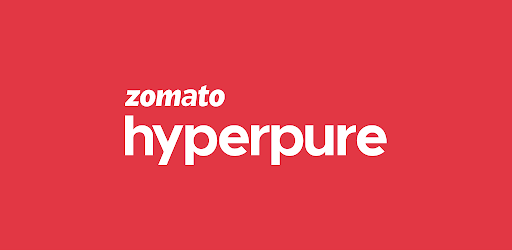This week, the hottest IPO of the year is all ready to hit Dalal Street, and this is the article for you if you’re searching for a clear overview of the problem and exploring how Zomato Is Taking Over The Online Food Delivery Market.

What is Zomato?
Not the one you’re thinking of. The private company which was founded in 2008 and currently owns the largest restaurant ordering platform in India is the latest in the long line of entities with a claim to fame which everyone is talking about.
This latest food delivery service has been able to get a bunch of investors, one of whom is Softbank Group, believing in their ability to generate a gross merchandise value of $1 billion. While most of us are well aware of the fact that they didn’t quite get the share price they were hoping for, they are nonetheless planning to go public.
A somewhat unheard of fact is that Zomato allows you to order take away food from over 5,500 restaurants in over 100 cities. If you’ve tried these restaurants in person, you’ll know why they’re so popular.
Growth of the company
Zomato has been a runaway success with it’s aggressive expansion across various industries. The list of countries where the company has a presence is a lengthy one and it isn’t quite possible to cover all of them in a single article. But, some quick facts about the business: Zomato runs 4 different business segments – Food, Home Services, Food Delivery and Payments.
Food Delivery and Payments. All these segments of the company are growing in double digits, albeit some much faster than others. It seems that the only area of the company where it is seeing a slow down in growth is the Food Delivery. But, that’s because the food delivery segment has been gradually increasing in number of restaurants, which has led to the slowdown.
Why Zomato is a GOLD MINE in the making?
Zomato and Swiggy are practically sitting on a data gold mine and they can use it very easily to launch their own food chain evetually undercutting the existing food chains to make millions of dollars in profits. And this can turn Zomato and Swiggy both into super profitable businesses in no time.
Do Zomato or Swiggy have the X element? Silicon Valley’s June is the solution. June was among the first to create a smart oven in 2013. A screen for viewing recipes was added to this oven in 2013. controllable through WiFi It even worked with Alexa in 2013! The firm’s success drew big investors.
The Amazon Alexa Fund invested in June for three years in 2018. (2015-2019). So that occurred. Strange things happened. A year later, a third smart oven. In addition to Wi-Fi, it features Alexa. It was also half the price of June Ovens. June’s oven sells at $499-699.
Amazon’s oven was only $250 back then. So this budding startup became its own major investor. then Amazon ate its own top sellers’ profits. June’s storey isn’t unique. A complex strategy to bankrupt all competitors And the approach is straightforward.
Step 1: Find a best seller. Make a list of all the specs using the seller’s profile data. that makes it a best seller. Step 2: They read the evaluations and discover what customers adore about it. Then they purchase a factory. get them to produce the same thing then they slash the price to 30–40% less than the best seller.
And without try and error Amazon makes millions of dollars easily. by selling everything simply removing the bestseller. And it’s all done because 3 amazing abilities of Amazon First, it possesses customer data. So Amazon knows. how much the consumer can pay, and what items they desire.
Competitors and Growth

Despite its success, meal delivery had a unique business strategy. The “food delivery” firms were simply selling takeout from a tiny eatery. They began there and grew, but the pie wasn’t big enough for everyone. As a result, the entire section was rocked.
It’s not the first time an Indian food delivery business, Swiggy, has innovated. It pioneered online ordering using mobile phones as a new delivery method. The concept came from Zomato, the business’s parent company.
Zomato’s Business Model
When one thinks of online food ordering, they don’t usually picture Zomato. In fact, a few years back, when they were an 800 sq ft apartment-based startup in Delhi, they were struggling to keep their staff motivated with salary packages of Rs 10,000 to Rs 30,000. The story of Zomato’s journey is fascinating.
It started in 2008 as an online chat platform where users can message each other while ordering food. It has since grown into a $1.1 billion company with 70,000 restaurant partners across 200 cities. There is no doubt that Zomato is today the biggest food ordering and delivery platform in the world and a leader in the space.
The future
Zomato has become a very interesting market. The question that is sure to come up in everyone’s mind is this- what makes it different from the plethora of other startups in the online food delivery market? The first is of course the fact that Zomato has survived in the midst of stiff competition from Uber Eats, Swiggy and many others.
Zomato is already building a robust supply with something
called Hyper pure And clould kitchen this is a supply chain that will connect the cloud kitchen directly with the source the big takeaway from this is that the company has proven itself and created a successful business model.
The latest stats from Indian food delivery startup Mixpo reveal that the aggregator is way ahead of Swiggy and Zomato with almost 51% market share. What’s more, Zomato’s latest funding of $200 million also clearly indicates that the company is on the right track and the trend is only going to get stronger.
Conclusion

Zomato is currently one of India’s largest players. This is what should drive investor sentiment going forward. Investors should keep one thing in mind in this regard: Zomato will not reach $1 billion in revenue in 2017.
You can argue that it can get there if it spends cash, but it will have to spend working capital or sell assets to do so that growth rate will be much more normalised by 2017, the CFO said on the most recent call. If the heady growth doesn’t continue for the next two to three quarters, the valuation already reflects that.




